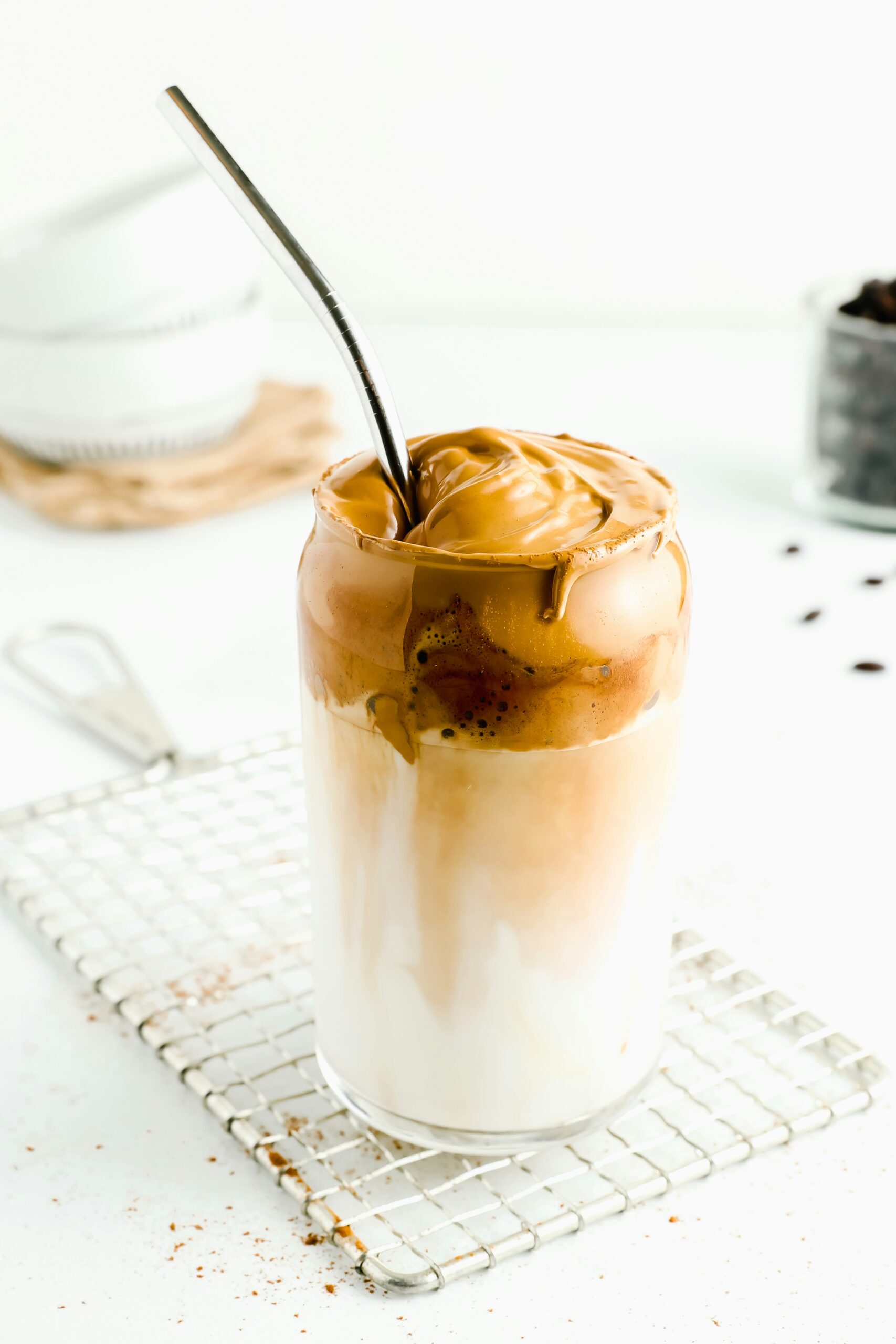
The internet has always been a place of trends, but in recent years, food content has taken on a life of its own. From aesthetically plated smoothie bowls to microwavable mug cakes, online food trends have spilled out from our phone screens and into our kitchens. For students in particular, these trends offer inspiration for meals that claim to be quick, cheap and irresistible. But do these recipes actually fit into the reality of student life, and how much influence do they really have on the way we eat?
TikTok and Instagram are now among the most influential platforms for food culture. One of the first trends that truly exploded was the Dalgona coffee phenomenon during the 2020 lockdown. Originating in South Korea, this whipped coffee drink involved mixing equal parts instant coffee, sugar and hot water until it formed a thick, frothy cream, which was then spooned over milk. This process became a daily ritual for many stuck at home. People spent upwards of ten minutes whisking vigorously, often by hand, to achieve the iconic cloud-like topping. The result was a café-style drink made with humble ingredients and a lot of patience. It wasn’t just about the flavour, it was about participating in something global while confined indoors.
Next came Gigi Hadid’s vodka pasta. This dish, a creamy tomato-based penne pasta with garlic, onion, cream and usually a splash of vodka, gained traction after the model shared it on her Instagram story. What made it unique was the use of chilli flakes for heat, and the indulgent balance of cream and tomato paste that made the sauce cling perfectly to the pasta. Students quickly picked up on it. Not only was it comforting and easy to make, but it also felt like a small luxury. The vodka could be skipped without much difference, making it accessible to underage or non-drinking students. Its popularity was so widespread that it started appearing in student kitchens across the world, often with slight improvisations using whatever was on hand.
The baked feta pasta trend also deserves mention. Originating from a Finnish food blogger and later catching fire on TikTok, the idea was simple: roast a block of feta cheese with cherry tomatoes, olive oil, garlic and herbs until it melts into a creamy sauce, then toss it with cooked pasta. The appeal was instant. The ingredients were minimal, the visual effect of the baked, bubbling cheese was deeply satisfying and the recipe could be done with virtually no cooking experience. For students, it became the perfect low-effort, high-reward dinner. But like many viral dishes, it lost some of its practicality after a few tries. Feta is not always cheap, and the richness of the dish means it doesn’t work well as a daily go-to.
Then came the tortilla wrap hack. This trend didn’t introduce a new ingredient but instead reimagined how a tortilla could be folded. You take one wrap, make a single slit from the centre out to the edge, then divide the wrap into four quarters. Each quadrant is layered with different ingredients, for example, cheese, ham, spinach and tomatoes, and then folded to form a compact triangle. It is then grilled or toasted, resulting in a layered wrap with crispy edges and gooey filling. What made it so appealing was the flexibility. You could use leftovers, go vegetarian, or even make it sweet with banana and Nutella. Best of all, it takes under ten minutes to prepare and with barely any washing up. I tried this several times and found it ideal for days when I got home late and didn’t want to deal with making a full dinner from scratch.
Lastly, baked oats took over as a breakfast-dessert hybrid. The idea was simple: blend oats with banana, milk, an egg and baking powder to create a batter, add flavourings such as chocolate or cinnamon, and bake until set. The result was somewhere between a muffin and a sponge cake. Videos often showed perfectly risen oat bowls topped with fruit, peanut butter or even Nutella. I tried a version that included cocoa powder and dark chocolate chips and found it rich and satisfying, but also time-consuming. The baking takes at least 25 minutes, which is hardly ideal for a rushed morning before lectures. It’s also more akin to a dessert than a breakfast despite its branding. Still, for a relaxed weekend morning or a Sunday treat, it does deliver on taste.
These trends share common threads. They are visually appealing, easy to follow and speak directly to the realities of student living. Whether offering comfort, novelty or just a reason to cook, online food trends have clearly shaped the way students like those at Trinity consume, cook and even socialise around food. Not all trends are created equal, however. Some, like the wrap hack, are genuinely useful in a student routine. Others, like Dalgona coffee or baked oats, are more about the experience than the efficiency. And then there are trends that involve expensive or hard-to-source ingredients, clearly aimed more at engagement than accessibility.
It is also important to note the role of aesthetics. Many of these trends succeed because they are photogenic. Perfect lighting, careful plating and smooth editing make even a basic recipe seem impressive. This can add pressure. Students may feel their own meals are inadequate if they don’t match the standard set online. At the same time, the sense of community that forms around these trends can be empowering. During lockdowns, making Dalgona coffee or Gigi pasta felt like participating in something larger. Even now, sharing a dish online can spark conversation, recipe swaps or even cooking evenings with friends.
On Trinity’s campus, the signs are visible. Students share food videos, swap ingredients, and recommend TikTok recipes to one another. The communal kitchens of college residences often become impromptu testing grounds for the next viral dish. While these trends don’t replace staple meals, they’ve expanded what students consider possible or worth trying. Cooking is no longer just a chore, it’s part of the culture. Late last year, the DU Food and Drink Society launched a short series called Campus Cuisine, a weekly social media feature that ran for three weeks. It showcased homemade lunches made by students across campus, highlighting the creativity and resourcefulness of student cooks. The submissions ranged from pasta salads to veggie bowls, many of which were clearly inspired by online trends. The series gave visibility to what food actually looks like in a university context and offered proof that even viral recipes can be adapted to fit into student life.
Looking ahead, new trends will keep emerging. Already, there are hints of upcoming viral dishes: creamy udon noodles, frozen yoghurt bark and crispy rice bowls are gaining traction. Some will be fads, others might become regulars. Even if the trends themselves fade, the influence they’ve had on how students cook, eat and connect over food is likely to last.






